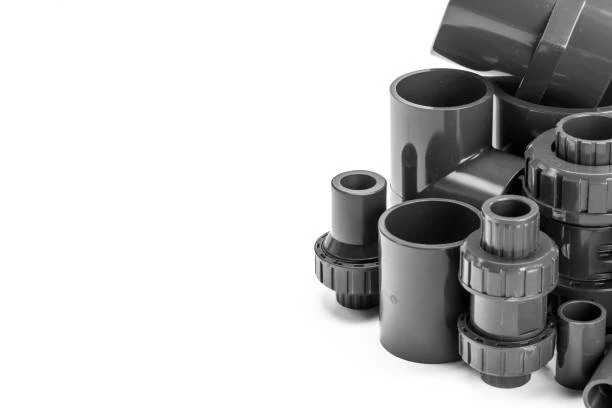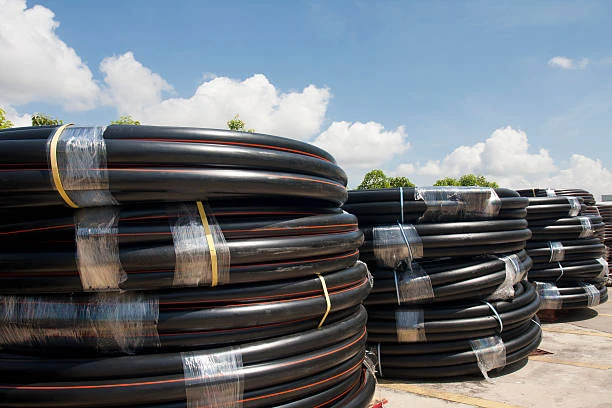The Southern African Plastic Pipe Manufacturers Association (SAPPMA) has recently released its 2023 market study, providing critical insights into the dynamics of PVC and HDPE pipe fittings markets across Africa and beyond. The report highlights key trends, regional demand drivers, and the growing prominence of HDPE pipe fittings in infrastructure projects.

1. Market Overview and Growth Drivers
The global HDPE pipe market, valued at approximately 94 billion yuan (USD 13.6 billion) in 2022, is projected to expand at a 4.67% CAGR through 2028. SAPPMA’s study underscores Africa’s emerging role in this growth, driven by investments in water supply, sewage systems, and agricultural irrigation. HDPE pipe fittings, known for their durability and chemical resistance, are increasingly favored over traditional materials like metal and concrete.
2. Regional Demand and Industry Influence
SAPPMA’s expansion into sub-Saharan Africa, including Botswana, Namibia, and Zimbabwe, reflects the region’s demand for high-quality piping solutions. The association’s certification and quality standards, endorsed by NSF International, have positioned HDPE pipe fittings as a trusted choice for critical infrastructure. The study notes that governments in these regions are prioritizing water and sanitation projects, creating a surge in demand for reliable, corrosion-resistant piping systems.
3. Technological Advancements in HDPE Fittings
Manufacturers are focusing on enhancing the performance of HDPE fittings through resin innovations and improved extrusion techniques. For instance, developments in PE100 and PE4710 resins have enabled the production of thick-walled HDPE pipes (up to 3 inches) with enhanced strength and processability. SAPPMA’s report highlights how these advancements address challenges like sagging (sag) during extrusion, ensuring uniform wall thickness and reducing material waste.
4. Competitive Landscape and Key Players
The HDPE pipe fittings market is dominated by global and regional manufacturers, including Spind Malaysia Sdn Bhd, Reliance Industries Limited, and local African producers. SAPPMA’s study emphasizes the importance of third-party certifications, such as those provided by NSF International, in differentiating high-quality products. Manufacturers adhering to SAPPMA’s standards are gaining a competitive edge in government tenders and large-scale infrastructure projects.
5. Applications and Sectoral Growth
HDPE pipe fittings are widely used in water distribution, gas pipelines, and industrial applications. The report notes a rising demand in agriculture, where HDPE systems are employed for irrigation and livestock watering. Additionally, the oil and gas sector’s preference for HDPE fittings over steel, due to their lightweight and corrosion resistance, is driving market growth in energy-rich African countries.
6. Sustainability and Environmental Considerations
SAPPMA’s study highlights the environmental benefits of HDPE pipes fittings, including recyclability and energy efficiency in production. The association advocates for sustainable practices, urging manufacturers to adopt eco-friendly resins and reduce carbon footprints. This aligns with global trends toward circular economies, where HDPE’s long lifespan and recyclability make it a preferred choice for green infrastructure projects.
7. Challenges and Market Barriers
Despite growth opportunities, the market faces challenges such as price volatility of raw materials. Import dependencies, and competition from lower-quality alternatives. SAPPMA’s report calls for increased local production capacity and skill development to reduce reliance on imports. Additionally, the association emphasizes the need for standardized testing protocols to ensure product quality and safety.
8. Future Outlook and Strategic Recommendations
The study projects continued growth for HDPE pipe fittings, driven by urbanization, infrastructure modernization, and stricter environmental regulations. SAPPMA recommends that stakeholders invest in R&D, adopt Industry 4.0 technologies for manufacturing efficiency, and strengthen partnerships with governments and NGOs to expand access to quality piping solutions.
FAQ
Q1: What are the primary advantages of HDPE pipe fittings over PVC?
A1: HDPE fittings offer superior durability, chemical resistance, and flexibility compared to PVC. They are also more suitable for high-pressure applications and have a longer lifespan, reducing long-term maintenance costs.
Q2: Which African countries show the highest demand for HDPE pipe fittings?
A2: Nigeria, South Africa, Kenya, and Egypt are leading the demand, driven by investments in water supply, sanitation, and agricultural infrastructure.
Q3: How does SAPPMA ensure the quality of certified HDPE fittings?
A3: SAPPMA collaborates with NSF International for third-party testing and certification. Products must meet strict standards for material composition, pressure ratings, and dimensional accuracy.
Q4: Are there government incentives for using HDPE pipe fittings in Africa?
A4: Yes, several African governments offer tax breaks and subsidies for infrastructure projects using sustainable materials like HDPE. SAPPMA works with policymakers to advocate for such incentives.
Q5: What is the expected lifespan of HDPE pipe fittings?
A5: When installed correctly, HDPE pipe fittings can last 50+ years, depending on operating conditions and maintenance practices.
By addressing these trends and challenges, SAPPMA’s 2023 market study provides a roadmap for stakeholders to capitalize on the growing demand for HDPE pipe fittings in Africa and beyond.

















